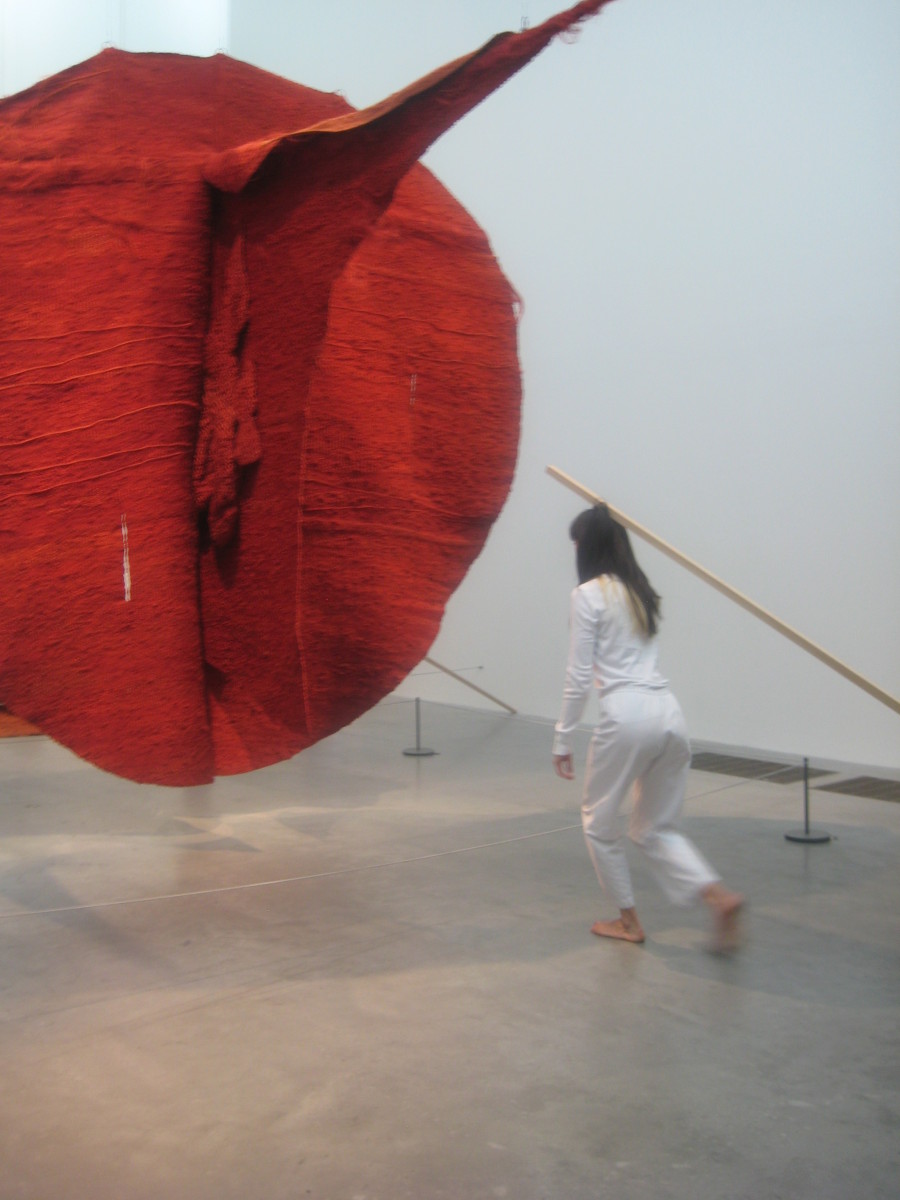What is it about Trisha Brown’s 1976 work Line Up (Spanish Dance) that is so enticing? Is it the brevity—it can’t last more than two minutes or so? Is it the Bob Dylan song (Early Morning Rain) that accompanies it? Is it the apparent simplicity of the choreography as the cast lines up equidistant from each other and one by one moves towards the person in front to create a mini-train of tightly bunched-up bodies. Is it the inevitability of it all as the wall looms closer and we know what the outcome has to be? Is it the sexy, hip-swaying walk with which the dancers proceed towards the wall in front of them? Whatever it is, it was there as the Trisha Brown Dance Company performed this work at London’s Tate Modern as part of the UK’s Dance Umbrella 2010.
The Trisha Brown event at the Tate Modern began on the bridge that crosses the vast Turbine Hall, which is the first encounter many visitors have with Tate Modern’s spaces. On the bridge four dancers, Tamara Riewe, Leah Morrison, Laurel Tentindo and Elena Demyanenko, performed Group Primary Accumulation a Brown work from 1970. While one’s own mind is allowed to wander and to speculate on many things as one watches, there is no room for the dancers’ minds to wander as, lying on the floor for the duration of the piece, they perform a sequence of movements that grows in complexity as the moves are repeated and added to with each repeat. The dancers’ level of concentration is more than admirable and the effect quite mesmerising.
Group Primary Accumulation was followed by Leaning Duets (1970) in which three groups of two dancers made their way down the sloping entry space of the Turbine Hall. With hands joined, inside arms extended tautly and sides of the inside foot pushed against that of the partner, each pair of dancers walked a step at a time down the slope, each testing the extent to which he (or she) could lean to the side without losing balance. It was especially interesting to see, a little later in the Tate’s film tribute to Brown, such duets being performed in 1970 in what appeared to be the streets of downtown Manhattan. Then the duets took place in a much more relaxed and casual environment and amongst curious and bemused passers-by.

From the Turbine Hall the dancers moved to various of the Tate’s gallery spaces and danced amongst the art works, making art amongst art. Here the program comprised another accumulation work, another version of the leaning duets, Line Up and two different versions of Sticks (1973). Sticks requires the performers secure one end of a long stick against a wall or to anchor it it some other way, balance the other end on a part of their body and then undertake a series of simple moves such as kneeling or lying down, all the while keeping the stick balanced. One version was performed by three dancers in three separate gallery spaces No dancer could see another and the dance unfolded with the performers indicating the stage they had reached by calling out to the others across the galleries. The dance concluded when the third dancer called ‘Done’.
For those who were not New York City residents in the 1960s and 1970s the Tate Modern event was an exceptional opportunity to see the early work of one of the twentieth century’s most significant dance pioneers. The works shown at the Tate represented on the one hand Brown’s interest in process and problem solving and on the other her attempts to redefine what constitutes dance and to blur the boundaries of dance and installation art. While nothing can ever replicate the original works performed in streets, on roof tops, down the side of buildings and the like, it was a rare privilege to see a twenty-first century manifestation of this early work by the current Trisha Brown Dance Company in London’s most impressive contemporary art space.
Michelle Potter, 23 October 2010
One thought on “Trisha Brown Dance Company at the Tate Modern”